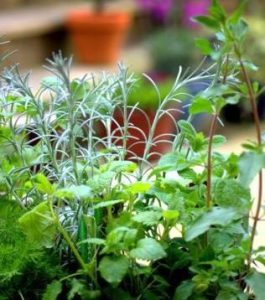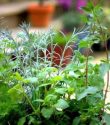Blowing winds, sideways rain, and frozen ground give gardeners nightmares. The winter is long and sad for plant people. House plants provide a remedy for those gardeners searching for spring. Indoor plants add life and color, and clean the air in a home environment.
Plants are important to interior design. Watch any of the home design television shows and you will find potted plants and greenery throughout the home. Potted plants are a part of history dating back to the pyramids. Ancient Egyptians valued their plants as art. The Romans and the Greeks built their homes with central atriums for their prized potted plants.
Many hobbyists helped to make house plants increasingly popular in the early 1900s. As women’s roles changed, they dealt more with the interior of the home. Plants moved inside to include growing for a hobby and as a collection. Both men and women became interested in house plants, especially in the cities. Plants in homes have been in fashion for decades with people becoming collectors and interior gardeners.
To have success with house plants you must control five things. Light is the most important factor in growth and maintenance. Remember southern exposure provides the most light followed by eastern and western with 60% of light available. Northern exposure provides the least amount of light at 20%. Water is the second factor, remembering this rule. Never let the soil go completely dry and never leave the plant standing in water. Temperature is also important. Excessive high or low temperatures create foliage damage, leaf drop, or general plant decline. The southern interior exposure in a house is the warmest. Ventilation in a heated home creates problems for house plants. Drafts and forced air will quickly dry them out. Potted plants need fertilization as do all other plants; just take care not to over-fertilize. Too much fertilizer creates reduced growth with too many soluble salts. Quarterly “leaching” by allowing water to run through the pot will help to remove those soluble salts. House plants really have few needs after they are settled in a place they like, just like the rest of us.
There are many house plants that are difficult to kill. They survive low light and are tolerant of being ignored. These plants have unique features and add to interior design. Here are a few that are tough as nails.
Snake Plant (Sansevieria) has strong blade like leaves with variations of green with yellow or white. The snake plant creates an interesting plant in two forms, the bird’s nest type which stays low and the sword type that may reach to five feet. The other name for this plant is the Mother-in-law’s tongue.
Chinese Evergreen (Aglaonema) comes with solid and variegated green leaves. The leaves are long and tapering with the plant reaching several feet tall. Chinese Evergreens accept low light and being ignored with the exception of watering.
Spider Plants (Chlorophytum) are named after their self-propagation efforts of producing miniature plants on the ends of long stems. The babies look like little spiders floating around the mother plant and are looking for soil in which to establish their roots. Spider plants have long thin leaves in green with white or yellow stripes.
Pothos (Epipremnum aureum) is a perfect plant for busy people. Pointed heart shaped leaves are colored in solid green to variegated with white, yellow, or lighter green. Pothos vines in the wild will grow up to forty feet. In a container they will limit themselves to around ten feet. Pothos are high on the list of plants that help purify the air.
There are many house plants that will tolerate low light, varying temperatures, too much love or no love at all, and lack of humidity. A trip to various nurseries can fulfill winter gardening needs with a wide variety of plants. House plants with interesting textures and colors can assist with the need for interior gardening therapy in the winter months, so be prepared to have green thumbs year round!
Julie Silva is a University of California Cooperative Extension Master Gardener of Tuolumne County.
UCCE Master Gardeners of Tuolumne County can answer home gardening questions. Call 209-533-5912 or go to: http://ucanr.edu/survey/survey.cfm?surveynumber=7269 to fill out our easy-to-use problem questionnaire. Check out our website at: http://cecentralsierra.ucanr.edu/Master_Gardeners/ You can also find us on Facebook or pick up the local UCCE Master Gardener book “Sharing the Knowledge: Gardening in the Mother Lode” at Mountain Books or the UCCE Office both in Sonora, CA


